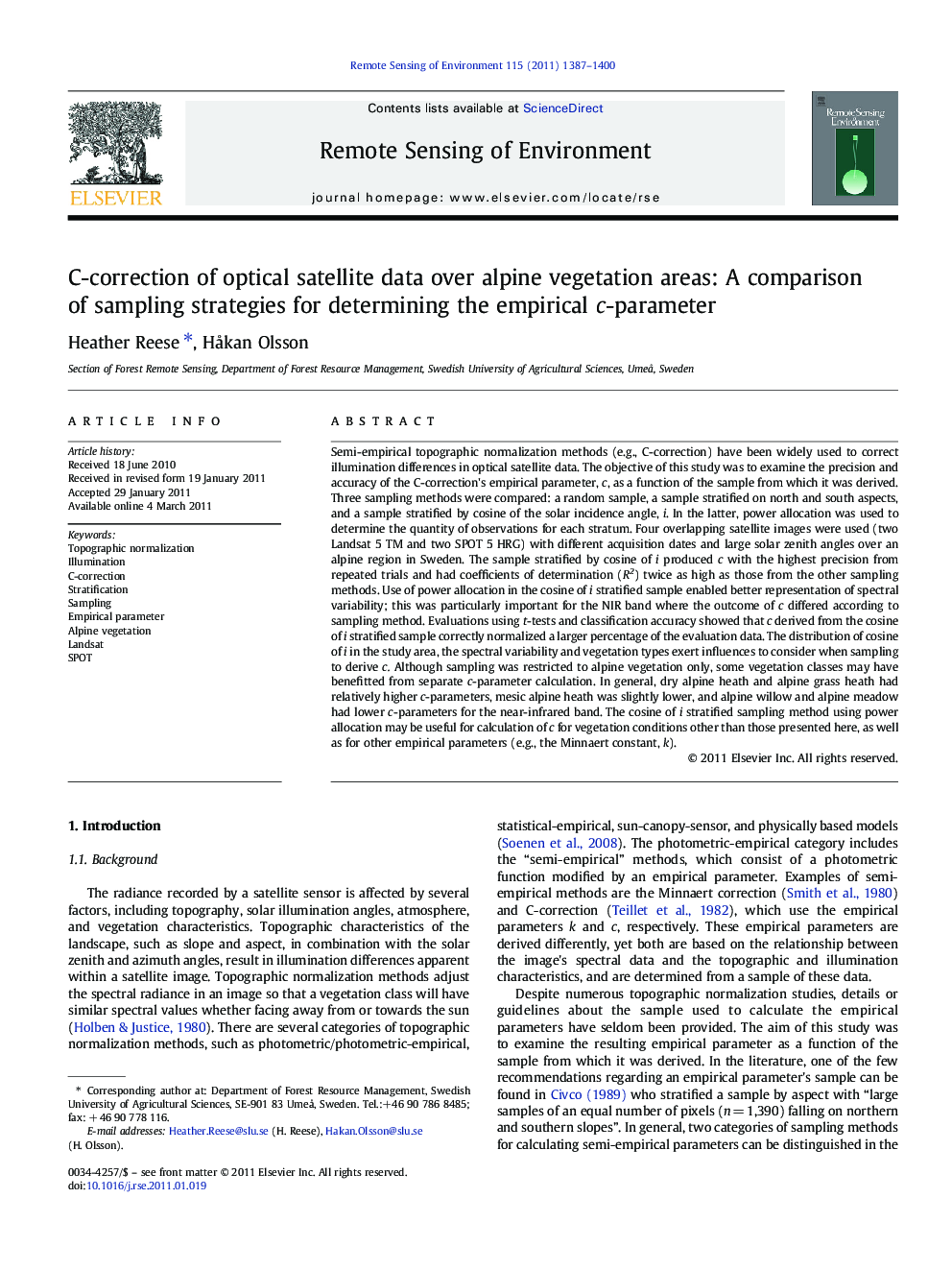| کد مقاله | کد نشریه | سال انتشار | مقاله انگلیسی | نسخه تمام متن |
|---|---|---|---|---|
| 4459378 | 1621291 | 2011 | 14 صفحه PDF | دانلود رایگان |

Semi-empirical topographic normalization methods (e.g., C-correction) have been widely used to correct illumination differences in optical satellite data. The objective of this study was to examine the precision and accuracy of the C-correction's empirical parameter, c, as a function of the sample from which it was derived. Three sampling methods were compared: a random sample, a sample stratified on north and south aspects, and a sample stratified by cosine of the solar incidence angle, i. In the latter, power allocation was used to determine the quantity of observations for each stratum. Four overlapping satellite images were used (two Landsat 5 TM and two SPOT 5 HRG) with different acquisition dates and large solar zenith angles over an alpine region in Sweden. The sample stratified by cosine of i produced c with the highest precision from repeated trials and had coefficients of determination (R2) twice as high as those from the other sampling methods. Use of power allocation in the cosine of i stratified sample enabled better representation of spectral variability; this was particularly important for the NIR band where the outcome of c differed according to sampling method. Evaluations using t-tests and classification accuracy showed that c derived from the cosine of i stratified sample correctly normalized a larger percentage of the evaluation data. The distribution of cosine of i in the study area, the spectral variability and vegetation types exert influences to consider when sampling to derive c. Although sampling was restricted to alpine vegetation only, some vegetation classes may have benefitted from separate c-parameter calculation. In general, dry alpine heath and alpine grass heath had relatively higher c-parameters, mesic alpine heath was slightly lower, and alpine willow and alpine meadow had lower c-parameters for the near-infrared band. The cosine of i stratified sampling method using power allocation may be useful for calculation of c for vegetation conditions other than those presented here, as well as for other empirical parameters (e.g., the Minnaert constant, k).
Research highlights
► The sampling method influences calculation of the empirical parameter c.
► Stratifying by cosine of i with power allocation gives precise c with higher R2.
► This results in more accurate c, particularly for NIR band.
► Some alpine vegetation types may need unique c for optimal normalization.
Journal: Remote Sensing of Environment - Volume 115, Issue 6, 15 June 2011, Pages 1387–1400